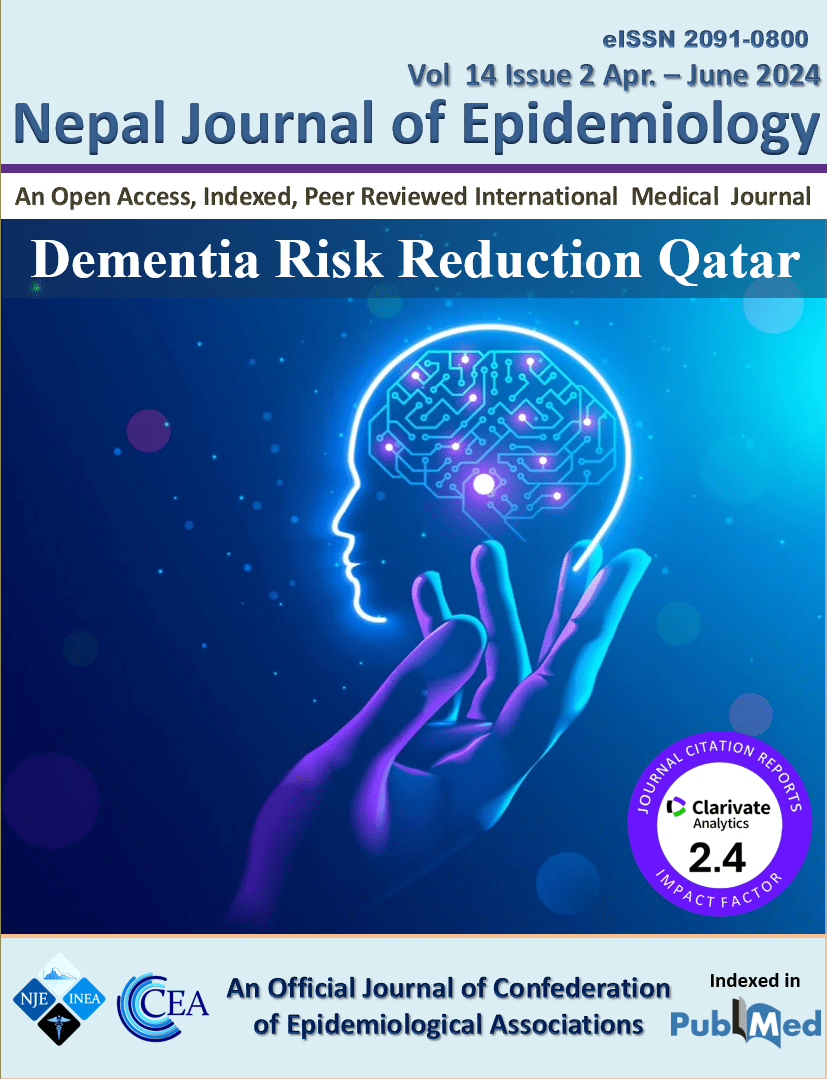Clinical features and management approaches for Urinary Incontinence in Older Adults: Evidence from Three Hospitals in Qatar
DOI:
https://doi.org/10.3126/nje.v14i2.69365Keywords:
Urinary incontinence, older adult, Qatar, AnticholinergicsAbstract
Background: Urinary incontinence (UI) is a common medical problem that seriously affects patients' physical, psychological, social, and financial well-being. To identify the most effective drug management techniques, this retrospective study aimed to describe the demographics, etiology, and medical traits of people with UI.
Methods: This retrospective study was conducted at Rumailah Hospital, Ambulatory Care Centre, and Hamad General Hospital to investigate UI risk factors, causes, and management practices in people aged ≥ 65 years within the Hamad Medical Corporation (HMC) in Qatar.
Results: The 272 patients enrolled in the study had a marked male preponderance, and a larger percentage of non-Qatari residents than Qataris residents. Solifenacin (24.9%), Tolterodine (4.1%), and Oxybutynin (1.1%) were the most commonly administered anticholinergic drugs, while Tamsulosin (82.9%), Alfuzosin (14.5%), and Doxazosin (1.7%) were the most frequently prescribed alpha-blockers.
Conclusion: This study underscores the importance of investigating UI in institutionalized older adult populations considering the limited research available in Qatar. The identified preventable risk factors can be proactively addressed to mitigate UI. This study also highlights the need for thorough documentation of the diagnosis and reasons for improving the standards of patient care. The findings of this study provide important information that can be used to design medication management methods for enhancing patient outcomes.
Downloads
Downloads
Published
How to Cite
Issue
Section
License
Copyright (c) 2024 CEA & INEA

This work is licensed under a Creative Commons Attribution 4.0 International License.
- Upon acceptance Copyright on any research article is transferred in full to the Confederation of Epidemiological Associations (CEA) and International Nepal Epidemiological Association (INEA). The copyright transfer includes the right to reproduce and distribute the article in any form of reproduction (printing, electronic media or any other form).
- Articles in the Nepal Journal of Epidemiology are Open Access articles published under the Creative Commons CC BY License (https://creativecommons.org/licenses/by/4.0/)
- This license permits use, distribution and reproduction in any medium, provided the original work is properly cited.




